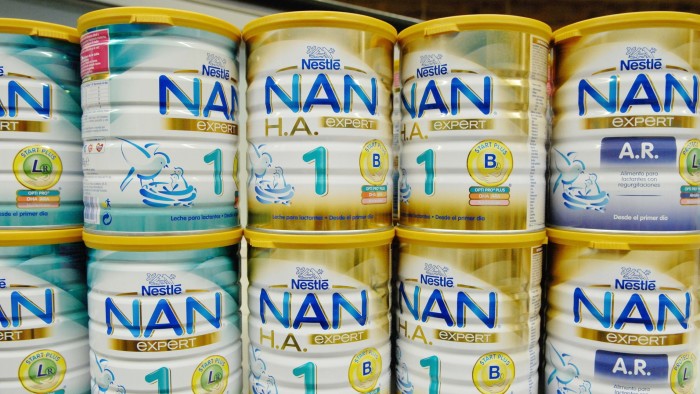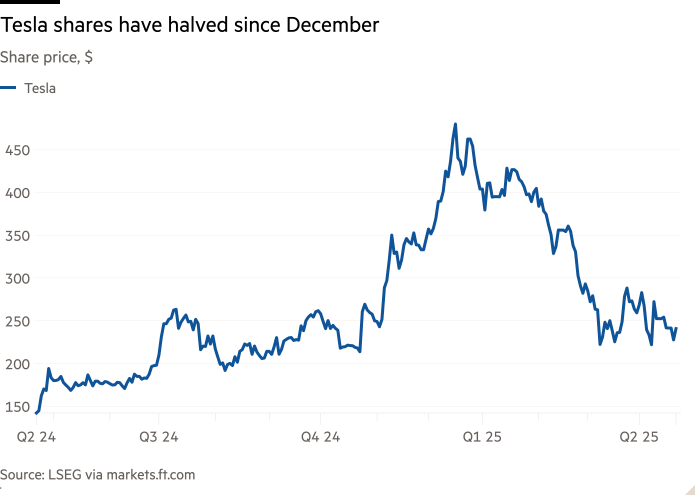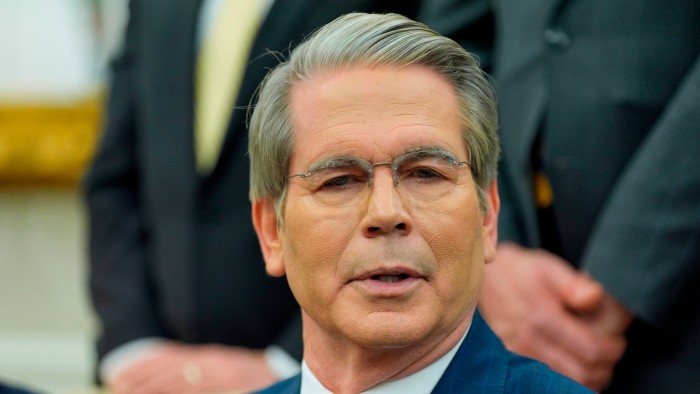Nestlé says parents with fewer children buy more expensive baby food

Unlock the Editor’s Digest for free
Roula Khalaf, Editor of the FT, selects her favourite stories in this weekly newsletter.
Parents having fewer children are buying more expensive baby food, according to the head of Nestlé’s nutrition business, as the world’s largest food company shifts its strategy to offset the impact of falling birth rates.
Nestlé, like other consumer goods companies, has been trying to push customers towards buying fewer, higher-priced goods as it attempts to combat a potentially shrinking customer base and higher ingredient costs, a strategy known as premiumisation.
Serena Aboutboul told the Financial Times that people with fewer children, or only children, “tend to spend more. We are seeing a clear reduction of the number of children per household. And this drives premiumisation”.
The Swiss group said that a steady decline in global birth rates, in developing nations as well as in richer economies, was driving demand in its higher-end baby products, such as Sinergity, NAN and Illuma.
Nutrition is Nestlé’s third-largest division, after coffee and petcare. The category includes infant formulas, baby food, and powdered drinks and milk such as Nesquick, Milo and Nido.
The division has been targeting sales of higher-end infant products including baby milk and foods, as well as driving down the cost of its cheapest brands, as part of a wider strategy to boost flagging performance at the consumer goods group.
In a full-year earnings update last month, the company said infant nutrition sales had grown at a low single-digit rate, driven by sales of its pricier formula NAN and its mass-market brand Lactogen.
It is targeting growth for infant and children’s nutrition at a compound annual rate of 2-3 per cent and 3 per cent respectively between 2025 and 2027, compared with 5 per cent growth for its adult nutrition brands, including supplements for women and ageing.
Countries around the world are grappling with declining birth rates, with two-thirds of the world’s population now living in countries with birth rates per woman below the so-called “replacement rate” of 2.1.
Aboutboul said a part of that phenomenon was women having children later in life, when they were typically more financially stable, also adding momentum to the sales growth of more expensive brands.
As well as targeting higher-end products for babies, Nestlé is also shifting further into areas such as providing supplements and fortified foods for elderly people, to address the concerns of ageing populations.
Aboutboul said Nestlé, which is undergoing a turnaround under new chief executive Laurent Freixe, was “expanding the boundaries” of its nutrition category, into products for mothers, older children, and to the elderly demographic.
“You have [fewer] babies, but you can look at toddlers, you look to the mothers, and develop a strategy on healthy ageing and longevity, which is a growing trend,” she said.
As well as aiming to grow its priciest segments, Nestlé’s nutrition division is lowering the cost of its mass market products, which include affordable formula Nestogen and instant cereal Cerevita, as it attempts to combat an increasing polarisation in consumer spending.
The company said it was targeting its cheaper products at vulnerable populations in Africa, Asia and Latin America, where malnutrition and “inappropriate” infant feeding was still high.






